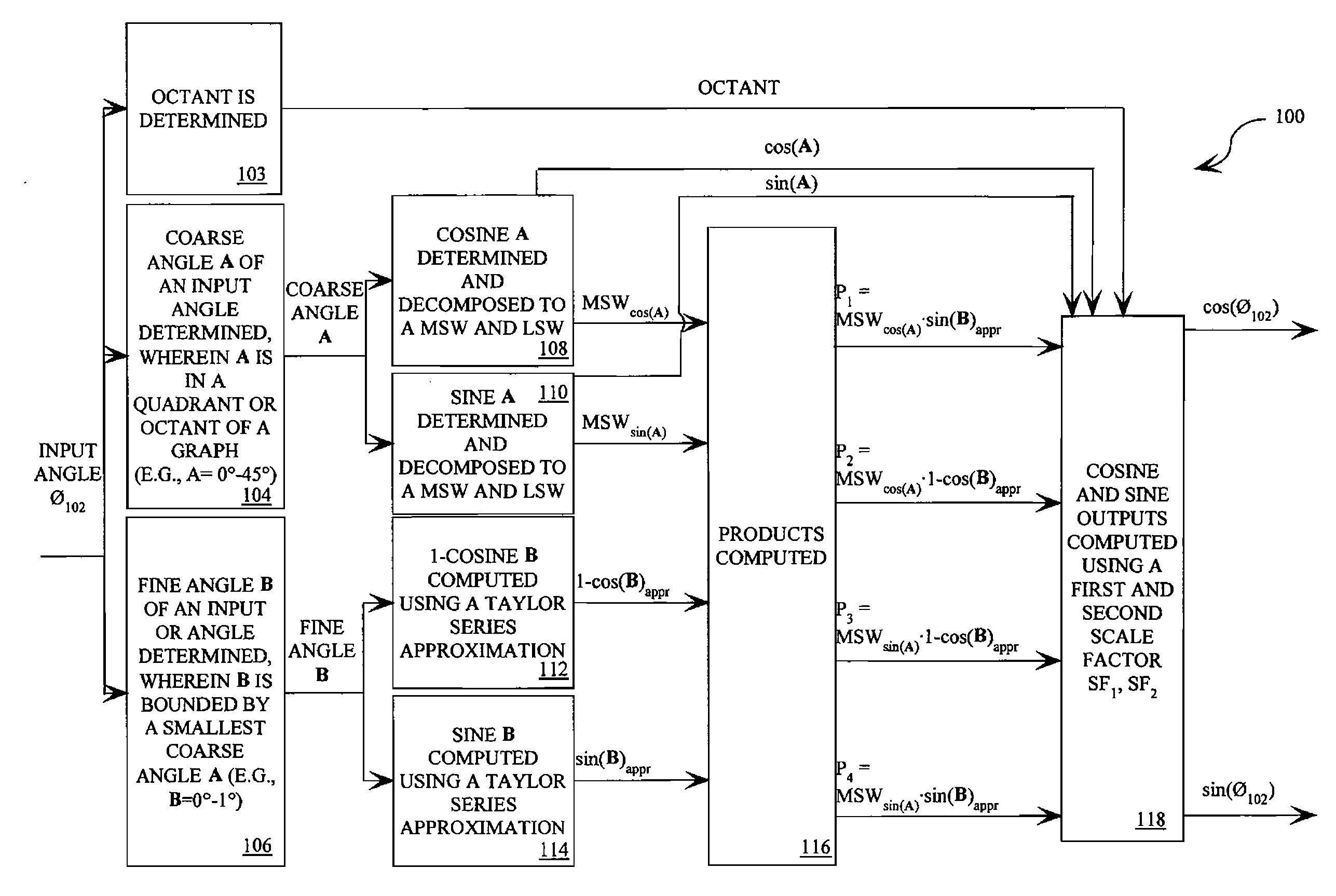Sine/cosine generator
a sine/cosine and generator technology, applied in the field of communication systems, can solve the problems of inefficient hardware of low-accuracy applications, computational intensive cordic based methods, and basic cordic methods that cannot take advantage of natural symmetries in the underlying trigonometric operators
- Summary
- Abstract
- Description
- Claims
- Application Information
AI Technical Summary
Problems solved by technology
Method used
Image
Examples
example 1
[0032]Assume that an input angle Ø102 is sixty five degrees (65°) or 1.134464014 radians, which is approximately equivalent to 0.0010111000111000111 when scaled to a binary representation (where zero is zero degrees and one is three hundred sixty degrees non-inclusive). As such, only the representations 0.0000000000000000000 through 0.1111111111111111111 are allowed. In such a scenario, the first determination step 103 reduces the input angle Ø102 to an angle between zero degrees (0°) to forty-five degrees (45°) through use of octant symmetry after the first octant results are computed. The angle between zero degrees (0°) to forty-five degrees (45°) is non-inclusive of the forty-fifth degree (45°). Octant symmetry is described in the following table.
Cosine output as aSin output as afunction of the firstfunction of the firstquadrant angle φ′quadrant angle φ′Input angle φ(input angle modulo π / 4)(input angle modulo π / 4)0 ≦φCos(φ′)Sin(φ′)π / 4 ≦φSin(π / 4 −φ′)Cos(π / 4 −φ′)π / 2 ≦φ−Sin(φ′)Cos(φ...
PUM
 Login to View More
Login to View More Abstract
Description
Claims
Application Information
 Login to View More
Login to View More - R&D
- Intellectual Property
- Life Sciences
- Materials
- Tech Scout
- Unparalleled Data Quality
- Higher Quality Content
- 60% Fewer Hallucinations
Browse by: Latest US Patents, China's latest patents, Technical Efficacy Thesaurus, Application Domain, Technology Topic, Popular Technical Reports.
© 2025 PatSnap. All rights reserved.Legal|Privacy policy|Modern Slavery Act Transparency Statement|Sitemap|About US| Contact US: help@patsnap.com



